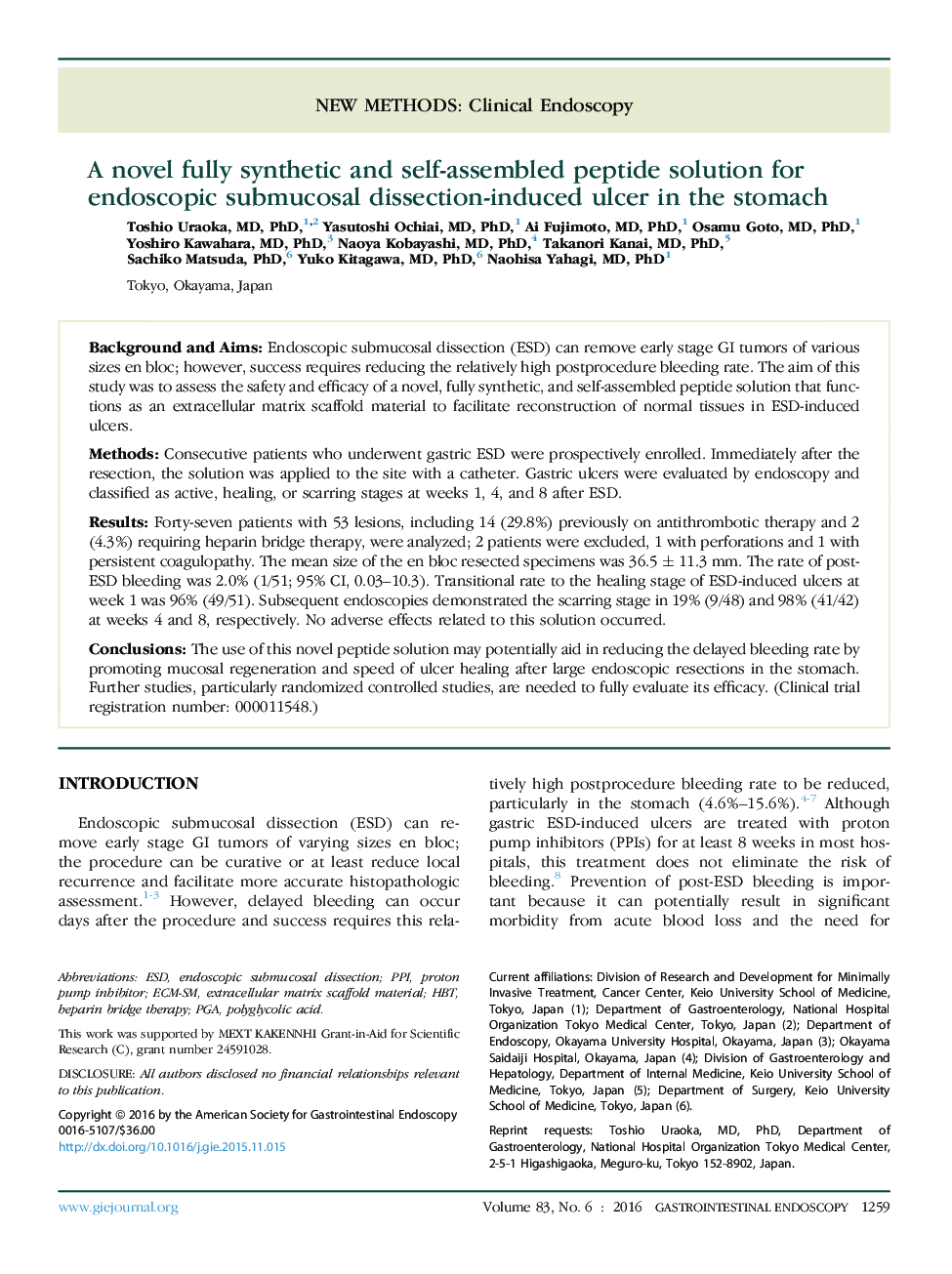| کد مقاله | کد نشریه | سال انتشار | مقاله انگلیسی | نسخه تمام متن |
|---|---|---|---|---|
| 3302279 | 1210294 | 2016 | 6 صفحه PDF | دانلود رایگان |
Background and AimsEndoscopic submucosal dissection (ESD) can remove early stage GI tumors of various sizes en bloc; however, success requires reducing the relatively high postprocedure bleeding rate. The aim of this study was to assess the safety and efficacy of a novel, fully synthetic, and self-assembled peptide solution that functions as an extracellular matrix scaffold material to facilitate reconstruction of normal tissues in ESD-induced ulcers.MethodsConsecutive patients who underwent gastric ESD were prospectively enrolled. Immediately after the resection, the solution was applied to the site with a catheter. Gastric ulcers were evaluated by endoscopy and classified as active, healing, or scarring stages at weeks 1, 4, and 8 after ESD.ResultsForty-seven patients with 53 lesions, including 14 (29.8%) previously on antithrombotic therapy and 2 (4.3%) requiring heparin bridge therapy, were analyzed; 2 patients were excluded, 1 with perforations and 1 with persistent coagulopathy. The mean size of the en bloc resected specimens was 36.5 ± 11.3 mm. The rate of post-ESD bleeding was 2.0% (1/51; 95% CI, 0.03–10.3). Transitional rate to the healing stage of ESD-induced ulcers at week 1 was 96% (49/51). Subsequent endoscopies demonstrated the scarring stage in 19% (9/48) and 98% (41/42) at weeks 4 and 8, respectively. No adverse effects related to this solution occurred.ConclusionsThe use of this novel peptide solution may potentially aid in reducing the delayed bleeding rate by promoting mucosal regeneration and speed of ulcer healing after large endoscopic resections in the stomach. Further studies, particularly randomized controlled studies, are needed to fully evaluate its efficacy. (Clinical trial registration number: 000011548.)
Journal: Gastrointestinal Endoscopy - Volume 83, Issue 6, June 2016, Pages 1259–1264
